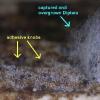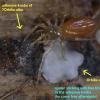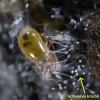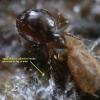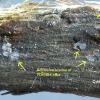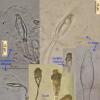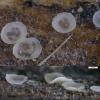
22-12-2025 23:38
Patrice TANCHAUDBonsoir, rûˋcolte sur un mur en pierre, apothûˋci

21-12-2025 09:32
Hello.A tiny ascomycete found embedded in wood in

22-12-2025 00:47
Patrice TANCHAUDBonsoir, rûˋcolte û proximitûˋ du milieu dunaire

21-12-2025 21:32
Pol DebaenstHello, Garden, Burgweg 19, Veurne, BelgiumOn 10/1

21-12-2025 21:40
Isabelle CharissouBonjour, j'aimerais connaitre les rûˋfûˋrences de

21-12-2025 21:31
Pol DebaenstHello, Garden, Burgweg 19, Veurne, BelgiumOn 10/1

21-12-2025 21:31
Pol DebaenstHello, Garden, Burgweg 19, Veurne, BelgiumOn 10/1

20-12-2025 23:08
Patrice TANCHAUDBonsoir, rûˋcolte sur sol sablonneux dans l'arriû
Orbilia alba with adhesive knobs
Hans-Otto Baral,
01-06-2009 13:01
 Hi together
Hi togetherI wish to show some results about the very interesting Orbilia collection made by Enrique, from Eucalyptus bark in Asturia. I identified this species as O. alba, but later found that while this Orbilia became senescent, another Orbilia developed with similar though wider spores with a larger, globose, central apical SB, which I identify as O. cotonoeastris (a close relative to O. rectispora and O. pellucida which JP Priou knows).
Now, I believe that to O. alba belong the adhesive knobs which trap arthropods, and also the Drechslerella anamorph with very thick 2-septate conidia and constricting rings. On the contraty, O. cotoneastris is a member of series Dactylella and has cylindrical multiseptate conidia and no trap organs are known.
The problems here are manyfold: The apothecia of O. alba are now decayed and no pure culture possible. We tried to cultivate the trap organs, but the result is still unsure. So, if this Orbilia shows up again I would be very glad to receive a further sample.
While the apothecia are gone, the adhesive knobs become more and more, and I added small spiders and mites. Actually, within a few seconds the legs stick to the knobs. Often the animals succeed to get free after keeping unmoved for some minutes to let me take pictures, but one small mite was captured yesterday and is now beginning to get overgrown by the hyphae.
The hyphae of the knobs with their Woronin bodies resemble well the anchoring hyphae of O. alba, but the last evidence should be brought by a culture.
When the animal legs touch the knobs, several knobs get glued together, and then the animal needs threefold power to get free.
Here an insect that was captured possibly 2 days ago and is now already overgrown by the hyphae.
Hans-Otto Baral,
01-06-2009 13:03
Hans-Otto Baral,
01-06-2009 13:05
Hans-Otto Baral,
01-06-2009 13:09
Hans-Otto Baral,
01-06-2009 13:11
Jacques Fournier,
01-06-2009 13:54

Re:Orbilia alba with adhesive knobs
Hi Zotto,
thanks for these impressive images, hope Enrique will find more material.
Cheers,
Jacques
thanks for these impressive images, hope Enrique will find more material.
Cheers,
Jacques
Perz Piotr,
01-06-2009 16:25
Re:Orbilia alba with adhesive knobs
Pablo Chacû°n,
01-06-2009 18:27

Re:Orbilia alba with adhesive knobs
Hi Zotto,
ôÀôÀôÀ interesting and impressiveôÀôÀôÀôÀôÀôÀôÀôÀôÀôÀôÀôÀôÀôÀ
ôÀôÀôÀ interesting and impressiveôÀôÀôÀôÀôÀôÀôÀôÀôÀôÀôÀôÀôÀôÀ
Enrique Rubio,
01-06-2009 20:58
Re:Orbilia alba with adhesive knobs
Hi Zotto and all others
Very nice images!! You do not look for it, because I did not put any sujet in Ascofrance. You it I sent to you personally.
We will try to obtain more fresh material of this Orbilia, but the weather is, at this moment, too dry.
I suppose that when we turn to find her, she will be very fat for eaten so many insects!!
Enrique
Very nice images!! You do not look for it, because I did not put any sujet in Ascofrance. You it I sent to you personally.
We will try to obtain more fresh material of this Orbilia, but the weather is, at this moment, too dry.
I suppose that when we turn to find her, she will be very fat for eaten so many insects!!
Enrique
Perz Piotr,
01-06-2009 21:15
Re:Orbilia alba with adhesive knobs
>>> I suppose that when we turn to find her, she will be very fat for eaten so many insects!!
hahahahahah :)))
hahahahahah :)))
Hans-Otto Baral,
01-06-2009 23:47

Re:Orbilia alba with adhesive knobs
o.k., then here an image of the adhesive knobs. They have a flask-like shape and a thick gel sheath which is, however, strongly dehydrated and rough in the normal condition in the moist box. In a water mout the gel swells enormously and gets quite invisible so that first did not see it at all.
Hans-Otto Baral,
01-06-2009 23:52
Miguel ûngel Ribes,
02-06-2009 00:35

Re:Orbilia alba with adhesive knobs
Wonderful images and document, impressive.

